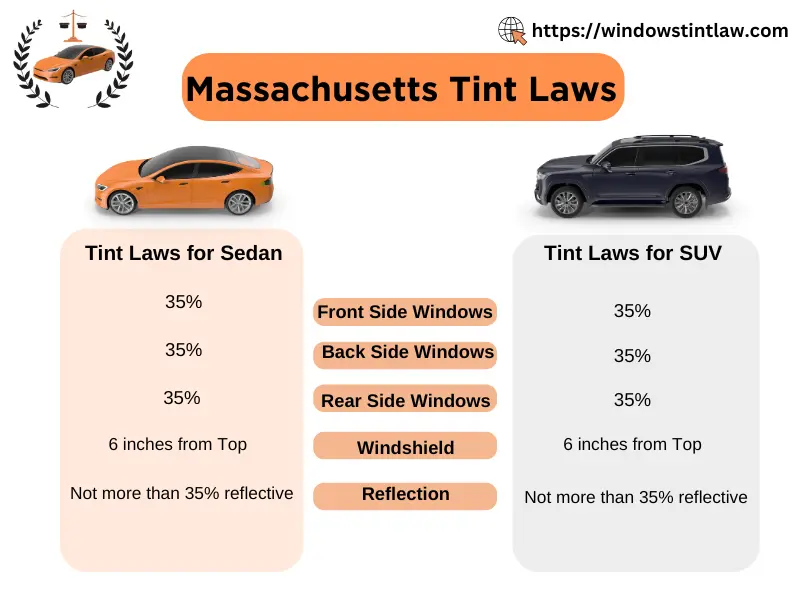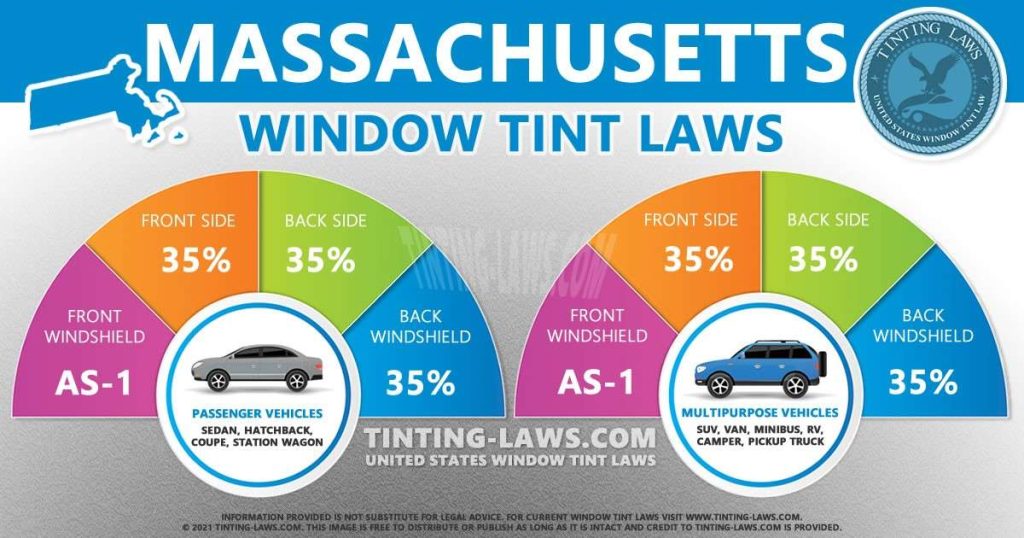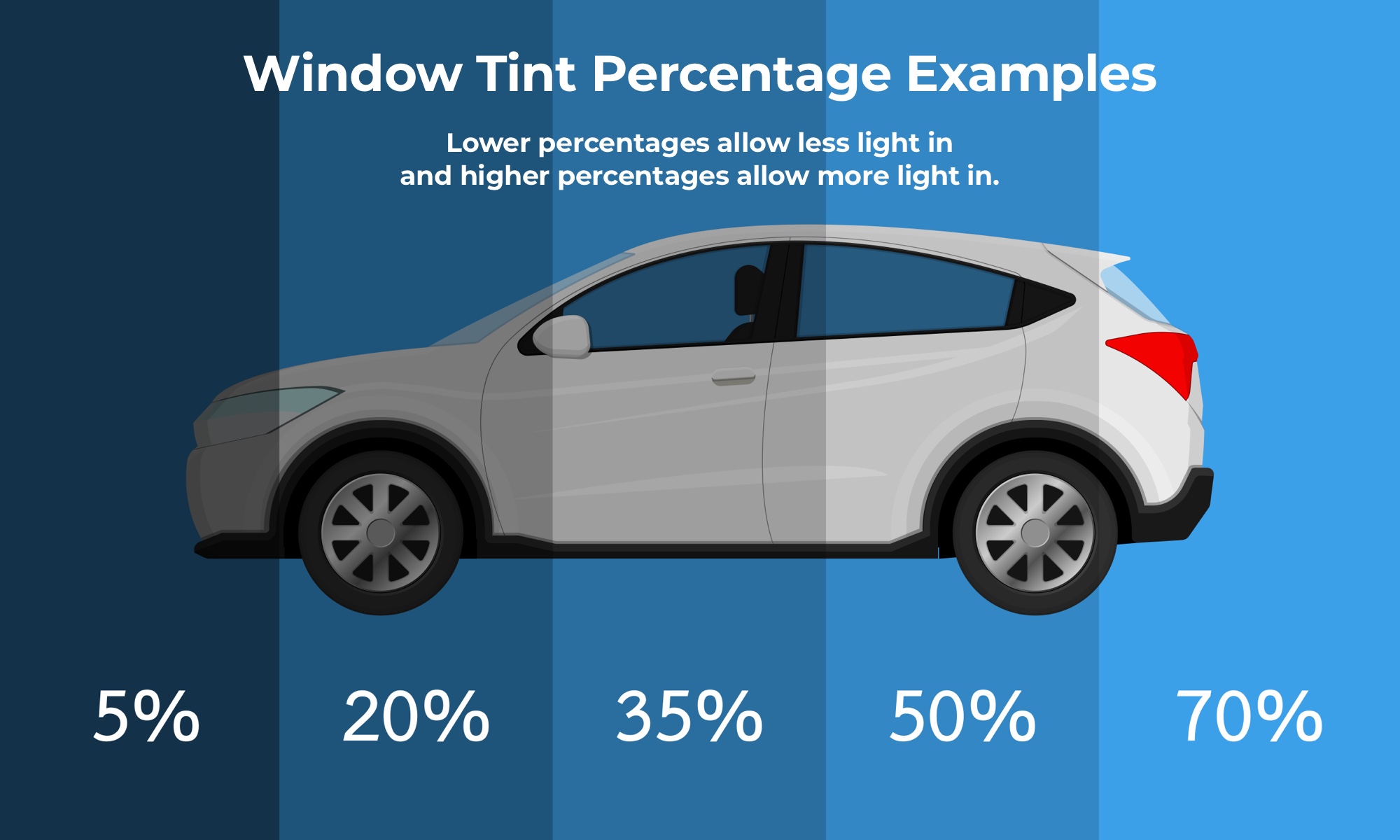Have you ever been on a sunny Massachusetts day, squinting through your car window wishing for just a bit more shade? Or perhaps you’ve considered tinting your windows to enhance your vehicle’s look and privacy?
Before you make that decision, understanding Massachusetts tint law is crucial. These regulations dictate how dark or reflective your car windows can be, and getting it wrong could lead to hefty fines or even safety issues. But don’t worry, you’re not alone in navigating these legal waters.
By learning about the specifics, you can make informed choices that suit your needs and keep you on the right side of the law. Dive in to discover how these rules apply to you, ensuring that your drive remains both stylish and compliant.
Overview Of Massachusetts Tint Law
Massachusetts tint law regulates vehicle window tinting. Compliance is crucial for drivers to avoid penalties. The law sets specific guidelines on how dark your windows can be. Understanding these rules helps you stay within legal limits.
Understanding Tint Darkness
Massachusetts law specifies how much light must pass through your windows. This is called Visible Light Transmission (VLT). For sedans, front side windows must allow at least 35% of light. Rear side windows also need to maintain the same percentage. SUVs and vans have more flexibility with rear windows.
Reflective Tint Limits
Reflective tint is limited to reduce glare. Front side windows cannot be more than 35% reflective. This helps ensure safety and visibility for drivers. Rear windows follow similar guidelines to maintain uniformity.
Exemptions And Medical Needs
Massachusetts allows tint exemptions for medical needs. Drivers must provide valid documentation. This ensures that those with conditions like skin cancer can tint their windows beyond normal limits. Proper paperwork is essential to qualify for these exemptions.
Failing to adhere to tint laws may result in fines. Law enforcement can issue tickets for illegal tinting. Removing the tint might be required to avoid repeat violations. Staying informed about regulations helps avoid these inconveniences.
Legal Tint Levels For Different Vehicles
When it comes to tinting your vehicle’s windows in Massachusetts, understanding the legal tint levels is crucial. Tint laws vary based on the type of vehicle you drive. Whether you own a sleek sedan or manage a fleet of commercial vans, knowing these specific regulations can save you from fines and ensure your safety on the road.
Sedans And Passenger Cars
For sedans and passenger cars, Massachusetts has clear guidelines. The front side windows must allow more than 35% of light in. Rear windows and back windshield can also have tint but should comply with the same light transmission rule.
Consider the sunny summer days when glare becomes a problem. Having your windows tinted not only adds a sleek look to your car but also provides comfort by reducing heat and glare. However, staying within the legal limits ensures your driving visibility is not compromised, keeping you and others safe.
Suvs And Vans
SUVs and vans have slightly different regulations. Front side windows must adhere to the 35% light transmission rule, just like sedans. However, the rear side windows and back windshield can be tinted to any level.
Think about those long family road trips where privacy and comfort are key. Darker tints on the rear windows can help keep the interior cooler and provide a more private space for passengers. But remember, keeping the front windows within legal limits is important for safety and compliance.
Commercial Vehicles
Commercial vehicles have their own set of rules. The front side windows should allow more than 50% of light in, which is stricter compared to personal vehicles. This ensures clear visibility for drivers who spend long hours on the road.
Imagine the impact of reduced glare on a long delivery route. While darker tints can be applied to rear windows, maintaining optimal visibility through the front is essential. It helps in navigating busy streets and ensures safety for both the driver and others sharing the road.
Have you ever been pulled over for having tints that were too dark? Staying informed about these regulations not only prevents such encounters but also enhances your driving experience. It’s not just about following the law; it’s about making informed decisions for your safety and comfort.
Tint Exemptions And Exceptions
Massachusetts tint law has specific rules for window tinting. Yet, there are exemptions and exceptions. These cater to unique situations. Understanding these can help avoid penalties. They ensure compliance with state regulations.
Medical Exemptions
Certain medical conditions need special tinting. This helps protect sensitive eyes. The law allows medical exemptions. A doctor’s note is required. It should state the medical necessity. This documentation must be kept in the vehicle. It ensures proof if requested by authorities.
Special Cases
Some vehicles have special tinting needs. Law enforcement and government vehicles often qualify. This is due to security and privacy requirements. These vehicles may have different tint standards. Such exceptions ensure safety and confidentiality.
Penalties For Non-compliance
Massachusetts tint law is strict, ensuring road safety and visibility. Non-compliance can lead to penalties. Understanding these penalties helps drivers make informed decisions. Knowing the consequences can prevent costly fines and vehicle inspection issues.
Fines And Fees
Drivers face fines for violating tint laws. Penalties vary based on the offense. First-time offenders usually pay a smaller fee. Repeat offenses can lead to higher fines. These fines aim to enforce compliance and ensure safety.
Impact On Vehicle Inspection
Non-compliance affects your vehicle inspection. Vehicles with illegal tint may fail the inspection test. This failure leads to additional costs and delays. Removing illegal tint is necessary before re-inspection. Compliance ensures your vehicle passes smoothly.
How To Measure Tint Darkness
Understanding how to measure tint darkness is crucial for anyone wanting to comply with Massachusetts Tint Law. As you consider tinting your vehicle’s windows, knowing how dark is too dark can save you from hefty fines and ensure your safety on the road. But how exactly do you measure tint darkness? Let’s delve into the practical methods and tools available to get it right.
Using A Tint Meter
A tint meter is a straightforward tool that can be your best friend when measuring window tint darkness. It’s a small device that clamps onto the window and gives you an instant reading. Think of it as a thermometer for your car windows.
To use a tint meter, simply place it on the window you want to test. Make sure you follow the instructions specific to your model, as some meters might require you to calibrate them first. Once attached, the meter will display the percentage of light that passes through the window.
It’s incredibly easy to use and ensures you get an accurate reading every time. If you’ve ever wondered how dark your windows really are, this is the tool to give you peace of mind.
Understanding Visible Light Transmission
Visible Light Transmission (VLT) is the term used to describe how much light passes through your window tint. In Massachusetts, the law specifies that your tint must allow more than a certain percentage of light through.
VLT is expressed as a percentage. For example, if your window tint has a VLT of 70%, it means 70% of the visible light is allowed to pass through. This is crucial for ensuring compliance with legal standards.
Knowing your VLT percentage can help you avoid legal issues and ensure your safety. Too dark a tint can reduce visibility, making driving dangerous. Do you know your vehicle’s VLT percentage? If not, it might be time to check!
Whether you’re using a tint meter or understanding VLT, measuring tint darkness is an essential step before hitting the road. It’s simple, practical, and can keep you on the right side of the law.

Credit: windowstintlaw.com
Choosing Compliant Tint
Choosing compliant tint in Massachusetts can be a bit tricky, but it’s crucial for staying on the right side of the law and ensuring your safety on the road. Whether you’re looking to enhance your vehicle’s privacy or reduce glare, understanding the rules surrounding tint can make a world of difference. You don’t want to invest in a tint only to find out it’s illegal. So, how do you make the right choice?
Approved Tint Materials
Massachusetts tint laws specify permissible types and shades of tint. While you might be tempted to go for a darker tint for privacy, it’s essential to check if it’s legal. Typically, law-compliant tints are made from materials that ensure visibility and safety. Consider materials like dyed film or metalized film that meet state regulations.
Have you ever been pulled over for a simple mistake? Imagine investing in the wrong tint and facing fines. Picking approved materials saves you from these headaches. Ensure your tint material is not only durable but also adheres to legal standards.
Working With Professional Installers
Finding the right installer can be your saving grace. Professional installers are well-versed in Massachusetts tint laws and will guide you in choosing the best options. They have the expertise to install your tint correctly, ensuring it’s both effective and legal.
Would you trust just anyone with your car? The same applies to tinting. A skilled installer can prevent costly errors and guarantee a smooth application. Why risk peeling or bubbling when you can trust a pro?
Choosing compliant tint is not just about adhering to laws; it’s about making smart decisions for your vehicle. With the right materials and a professional touch, you can enjoy the benefits of tint without any legal hassle. Are you ready to make the right choice for your car?
Maintaining Legal Tint
Maintaining legal tint in Massachusetts means following specific rules. These laws ensure safe driving and visibility. Proper upkeep of your tinted windows is essential. This will help you avoid fines and ensure safety on the road. Regular checks and timely repairs can make sure your tint stays within the law.
Routine Checks
Routine checks are crucial for keeping your window tint legal. Check your tint regularly for any signs of peeling or bubbling. These issues can affect visibility and attract attention from law enforcement. Use a tint meter to measure the darkness of your tint. This tool helps ensure your tint stays within legal limits.
Schedule inspections every few months. This can help identify any potential problems early. It’s better to address small issues before they become big ones. Keep documentation of your tint’s compliance. This can be helpful if you need to prove your tint is legal.
Dealing With Wear And Tear
Window tint can experience wear and tear over time. Sun exposure and cleaning can cause it to degrade. Look for signs like fading or discoloration. These could indicate that your tint needs attention.
Consider professional help for repairing or replacing damaged tint. Experts can ensure the new tint is applied correctly and legally. Always use high-quality materials for tint repairs. This ensures longevity and compliance with state laws. Keep your tint in top condition for safe and worry-free driving.

Credit: www.tinting-laws.com
Comparing Massachusetts Tint Law With Other States
Massachusetts Tint Law can be a puzzle, especially when you’re planning a road trip across the U.S. and need to understand how it stacks up against other states. Car enthusiasts know that window tinting isn’t just about aesthetics—it’s also about comfort and privacy. But with varying laws from state to state, things can get confusing. Let’s dive into how Massachusetts compares with other states and what that means for your interstate travels.
Similarities And Differences
Massachusetts has specific regulations regarding window tinting, particularly concerning the percentage of light that can pass through. Similar to some states, Massachusetts law requires a minimum of 35% visible light transmission (VLT) for front side windows. But unlike states like New York, which allows only 30% VLT, Massachusetts is slightly more lenient.
Interestingly, Massachusetts aligns closely with states like Connecticut, which also mandates a 35% VLT. However, if you’re heading to states like Arizona, you’ll notice a significant difference. Arizona permits much darker tints, with a VLT as low as 25% for front windows.
These differences mean that a tint legal in Massachusetts might not be acceptable in other states. Have you ever had to change your tint while moving to a new state? It can be a hassle, but understanding these laws helps avoid fines and legal issues.
Implications For Interstate Travel
Traveling across state lines can be a fun adventure, but it comes with its own set of challenges, especially when it comes to window tinting. Imagine cruising from Massachusetts to a state with stricter tint laws. You might find yourself in hot water if your tint doesn’t comply with local regulations.
Many drivers opt for removable tint films or consult with experts to ensure their vehicle is road-ready for different jurisdictions. Have you considered how your tint choice affects your travel plans? It’s a question worth pondering if you frequently drive across state borders.
Staying informed and proactive can save you from unexpected fines. Checking the tint laws of your destination state is a practical step every interstate traveler should take. It’s not just about legality; it’s about ensuring a smooth and hassle-free journey.
So next time you’re planning a trip, take a moment to review the tint regulations. It might just save you a headache down the road!

Credit: capecodtintguy.com
Frequently Asked Questions
What Is The Darkest Legal Tint In Massachusetts?
In Massachusetts, the darkest legal tint for passenger cars is 35% VLT for side and rear windows. Windshield tinting is restricted to the top six inches. Ensure compliance to avoid penalties.
Is 20% Tint Legal In Ma?
In Massachusetts, 20% tint is illegal for front side windows. Rear windows can have darker tints. Ensure compliance with state laws to avoid fines. Always check local regulations for updates on window tinting rules.
In What State Is 20% Tint Legal?
20% tint is legal in states like Florida and California for rear windows. Laws vary by state, so check local regulations. Always ensure compliance with state-specific tinting laws to avoid fines.
Should I Get 35 Or 20 Tint?
Choose 35 tint for better visibility and subtle style. Opt for 20 tint for darker, privacy-focused look. Consider local regulations, vehicle use, and personal preference. Both options enhance aesthetics and offer UV protection. Make your decision based on desired appearance and functionality.
Conclusion
Understanding Massachusetts tint law is crucial for vehicle owners. It ensures compliance with legal standards. Proper tinting enhances safety and comfort. Legal tint protects from excessive sunlight and glare. Following the law avoids fines and penalties. Review your vehicle’s tint regularly.
Stay informed about any changes in regulations. Local professionals can assist with legal tinting. Keeping your car within legal limits is simple. Be aware, stay safe, and enjoy your ride. Make informed choices for better driving experiences. Massachusetts tint law promotes road safety for everyone.
